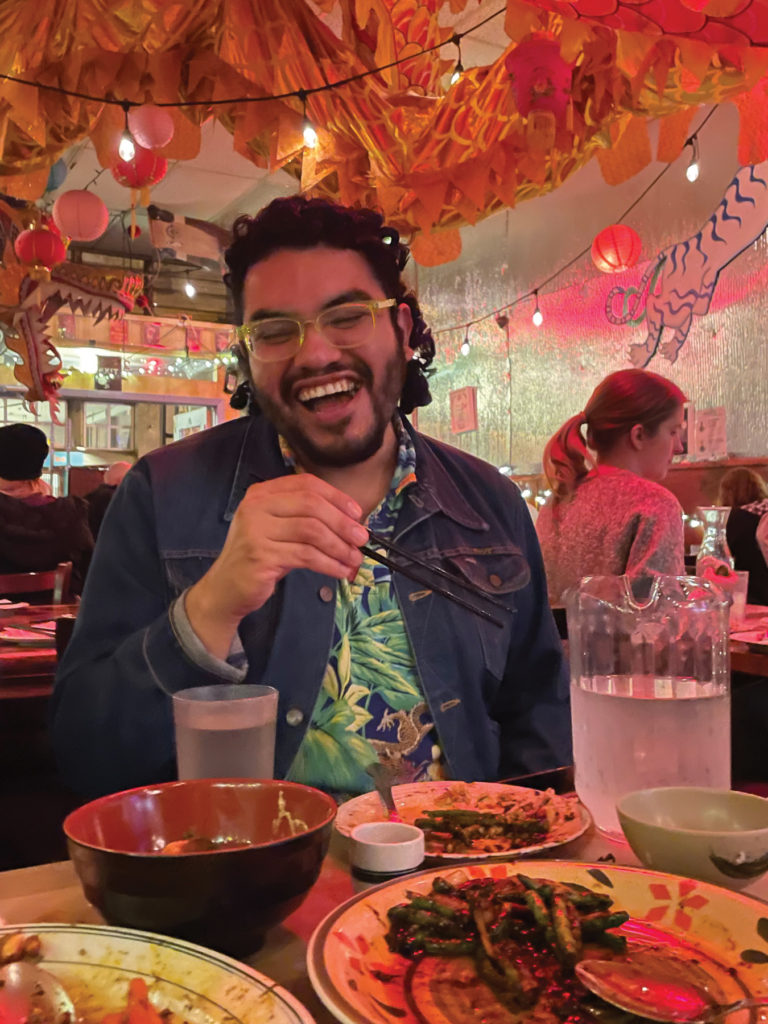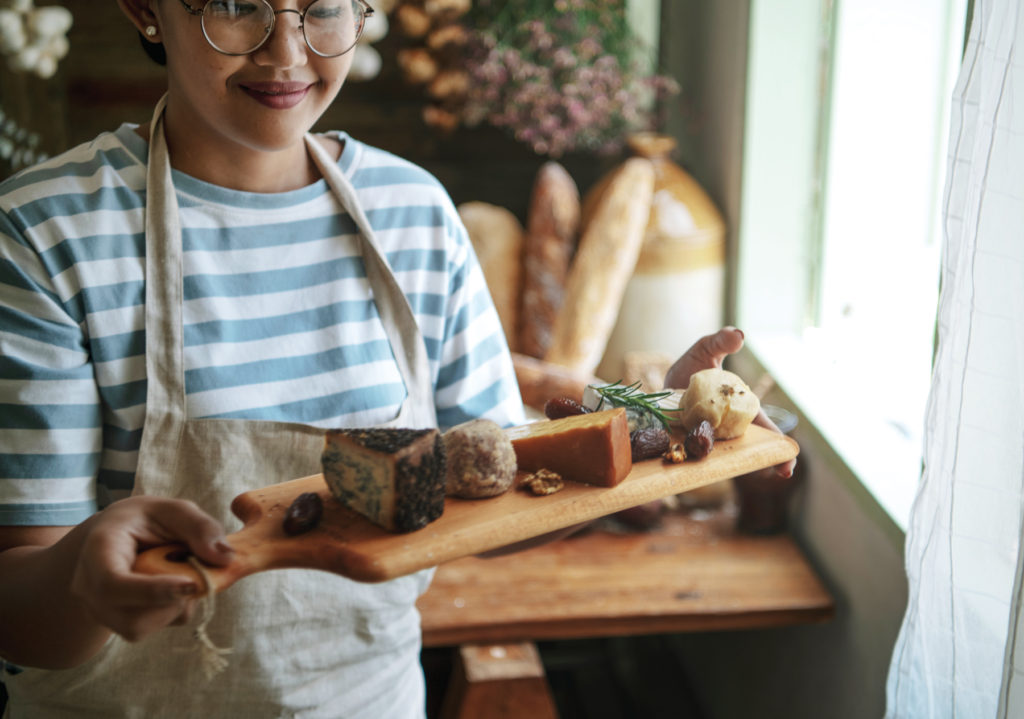
Cheesy Come, Cheesy Go
Long before I began working professionally as a cheesemonger, I loved to eat. Whether that was wood-fired beans, home-raised goat birria at my parents’ Paso Robles home (abuela’s Jalisco-style recipe, of course), a taco found after stumbling into the first taco truck I’d see in Los Angeles, or even a simple bucket of plums enjoyed while swaying in a hammock on a breezy Sunday.
My mother is Nicaraguan, which means we were raised with a palate that favored sweet and savory. After immigrating to the U.S. in 1970s, my mother learned from her Mexican and Salvadoran co-workers how to adapt to the lack of Nicaraguan produce here. She now makes a salsa just as good as one you’d find in a Mexican household and has learned to stew meats like no other. My father is from Jalisco, Mexico, so we also eat a lot of nopales, shrimp and birria. Fried plantains are part of every other meal. We also eat fresh rice every day, even when we order pizza. If we were to receive an unexpected guest, the first thing Má would do is grab her rice pan and rush past the mob of barn cats towards the outdoor kitchen. With her, there are no hugs, just rice.

Back in 2015 when I was a full-time student at California State University, Long Beach, my love of food compelled my ludicrous decision to drive through dense L.A. traffic for a pop-up event at a brewery called Vagabond Cheese Company. Though it’s no longer open, the self-described nomadic cheese counter was known for its cheese and beer pairings. This is where I plunged right into what now feels like a career in eating.
Living in L.A. County, I quickly became acquainted with the 405 freeway and the food offered by adjacent cities. Given my many options, I decided to take advantage and conquer — katsu curry, ceviches, tacos gobernadores. Cheese and beer were often involved before, after or during the meal.
To finance my food conquests, I worked the counter at Vagabond, as well as back of house at several establishments across L.A. I enjoyed working at Vagabond because we focused on what I think is important about food: not simply understanding the ingredients, the process and the people involved, but also firmly grasping the relationship between the food you eat and the sensory experiences your body shares with it.
Eating cheese is fun. Eating cheese with people can also be fun. Something that makes cheese super interesting is the sociocultural relationship we have with it. It’s social capital, kind of like wine. It draws people in. We’re talking about a food that predates recorded history, yet people are intimidated when they walk up to a cheese counter. That’s a bummer because I firmly believe that cheese is for the people.
In my role, I’ve come to understand that consumers place a heightened value on European cheeses over those made in the rest of the world. I’d argue that Mexican dishes are cheesier than Euro dishes, when you really think about it. Traveling through Mexico and eating the cheeses that country has to offer was such an incredible experience. The offerings there are so diverse and delicious, but Mexico hardly ever enters the conversation about artisan cheeses.

An eerie shadow of racism and classism is cast when you put experienced cheesemongers of color behind a counter right next to a white colleague. In my experience, customers tended to respect the opinions of and explanations given by my white colleagues more. It feels normal at this point but sometimes I reflect on a time when customers imposed on me a strange insistence that I must be Italian just because I have brown skin and worked at an Italian grocer.
I quit that job, graduated and moved back to the Central Coast to be closer to my parents. Living at home is rewarding because I’m not only building on the relationship with the food I grew up with in my parents’ home, but I’m also coming to know the food the local terrain offers. While I was helping Di Raimonodo’s Italian Market in Paso Robles with its cheese buying, I received an offer for work outside the food industry. Though I no longer sell cheese, I work front of house at Les Petites Canailles when I’m not working as a child development specialist.
My parents are absolutely recluse and the only thing that brings them out of their countryside home is shopping for produce. My mother frequents Loo Loo Farms on her walks with our family border collie, Whistle. We love their peppers, specifically the ghost peppers. In my home, we eat a lot of salsa during pepper season, to say the least.
My mother turned 63 this year and she is always approaching food with a child-like uncertainty, an intuition rooted in the belief that there are always more adventures. And that’s mostly how I plan to continue to pursue my life, just less time in the kitchen and more with each bite.

